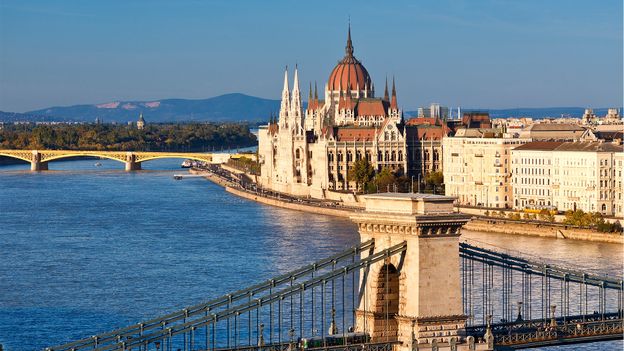
A skincare expert’s guide to the five best thermal bath experiences in Budapest
[ad_1]
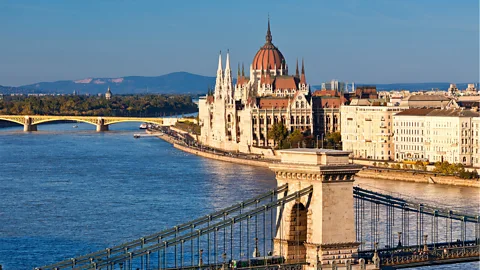 JOHN KELLERMAN/Alamy
JOHN KELLERMAN/AlamyCo-founder of the Hungarian cult skincare line Omorovicza, Margaret de Heinrich shares her favourite thermal baths in Budapest, from the spectacular Széchenyi to the glam Gellért.
Glamorous Budapest may be split in two by the Danube River, but it’s forever united by its love for thermal spas.
“There is a very strong curative spa culture [here],” said Margaret de Heinrich; co-founder of the cult Hungarian spa skincare line, Omorovicza. “And that curative culture originates in its healing waters.”
Landlocked Hungary boasts more than 1,300 thermal springs; there are 123 fonts in Budapest alone, earning it the nickname “City of Spas”. But for Hungarians, the notion of a “spa” goes deeper than mere facials; Hungarian spring water is rich in minerals like zinc and magnesium and has been used by doctors to treat skin ailments for more than 2,000 years. Today, Hungarian thermal baths offer medical treatments and lush spa services, and are beloved for their spectacular architecture and invigorating indoor and outdoor pools.
“[They’re] a part of everyday life,” said de Heinrich, who became fascinated by Hungarian spas after visiting the baths dramatically improved her skin. “People go there on dates, people go there to play chess. People go there for meetings. It’s not the exception. Everyone goes to the thermal baths.”
Budapest’s baths are found in both the stately Buda and lively Pest sides of the city, and it’s possible to trace Budapest’s history through their architecture – from 16th-Century Turkish inlaid tiles to Habsburg Baroque frills to bold geometric Secession Art Nouveau flourishes.
“The first thing that hits you,” said de Heinrich, “is just how exotic these thermal baths are. You’ve got the frescoes everywhere and the waters are so hot the steam can kind of take your breath away.”
Here are de Heinrich’s favourite thermal baths in Budapest.
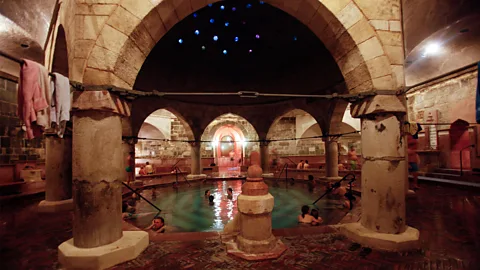
1. Best all-around: Rudas Thermal Bath
De Heinrich loves many of Budapest’s thermal baths but said, “If I were to give you one, it would be the Rudas.” Dating to 1571, the Rudas Thermal Bath is located in Buda in the shadow of the majestic Buda Castle and is one of Budapest’s four 16th-Century Turkish baths – resplendent with decorative elements like Ottoman domes and an octagonal pool. “It’s incredibly authentic,” she said. “You’ve got these domed ceilings with wonderful, coloured glass. It’s a bit of a meditation. I love it because you feel so invigorated when you come out.”
De Heinrich likes to go at 06:00 before it gets crowded and, following the “go little and often” rule, takes just a quick 20-minute dip. “[It’s about the] minerals,” explained the skincare mogul. “They’re not necessarily bioavailable. When you get into these thermal baths because of the heat and the amount of time your skin is exposed, the minerals are absorbed, and the benefits are realised. When you get out that water is going to evaporate, and the minerals are going to be drawn back to the surface of the skin.”
Tip
Swimsuits are commonly worn in Hungarian baths, and flip-flops and a Turkish towel are always part of de Heinrich’s kit. “You can wrap it around, you can hang it on anything,” she said. “Bring maybe a little bit of your own soap if you want to take a shower after. I don’t take a shower. I prefer to keep the waters on.” Pregnant women and children under 14 are not admitted to the medicinal baths.
The Rudas is also de Heinrich’s pick for a girl’s night: “I would go there in the evening before you go out,” she said. “It’s super, super fun. They’ve got a pool on the rooftop where you can drink Champagne.”
Rudas Thermal Bath’s services include massages, medical-grade pedicures and clinical facilities like medical pools and tubs. It is also Budapest’s only gender-separated bathing experience – men on Mondays, Wednesday, Thursdays and Fridays; women on Tuesdays. Bathing is mixed on the weekends.
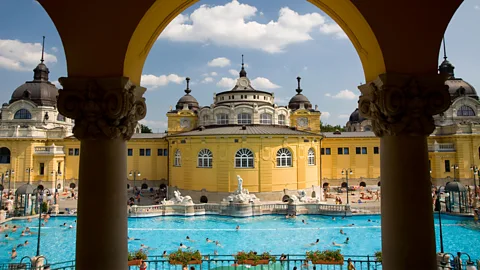 robertharding/Alamy
robertharding/Alamy2. Best outdoor thermal pool: Széchenyi Thermal Bath
Hungary’s outdoor thermal baths are pure joy – a sea of happy, healthy merfolk – and de Heinrich’s pick for the best outdoor pool in Budapest is the Széchenyi Thermal Bath. “It’s spectacular on the outside… especially in the winter when the steam is rising,” she said. “They have the thermal baths of different temperatures. The hot spring temperatures range from a brisk 64F [18C] to a scalding 104F [40C].”
The Széchenyi Thermal Bath is located in Pest’s lush City Park and is one of the largest spa complexes in Europe, boasting a whopping 18 thermal pools. It was built in 1881 in the Neo Baroque style and its thermal water source was unleashed by renowned Hungarian geothermal expert Vilmos Zsigmondy.
Margaret de Heinrich was introduced to Hungarian spa culture when her future husband took her on a date to his family’s historic bathhouse, the Ottoman-era Rácz Fürdő (closed since 2010; slated for a grand reopening in 2024). Budapest’s spas are a common site for dates, said de Heinrich. “It’s a wonderful time to relax and it’s a great time for storytelling about where one’s from. It’s not for everyone… but I think it’s a pretty cool thing.”
For de Heinrich, the aesthetic and curative treatments are one of the Széchenyi’s major draws. “I would do a body treatment,” she advised, “I’d get a massage.” The baths also feature sauna and thalassotherapy services. The pampering continues in the Dayspalm “exclusive relaxing area” where guests can sip cocktails. But for those seeking a livelier bath experience, the Széchenyi hosts “Beerspa” bathing sessions and “Sparty” nights set to an electronic dance music soundtrack.
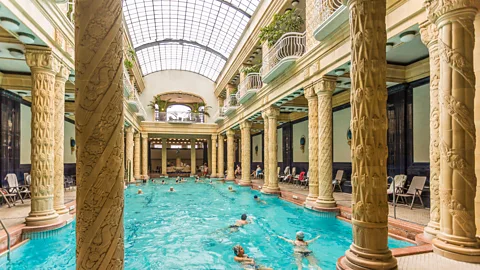 Alamy
Alamy3. Bestinterior design: Gellért Thermal Bath
The sumptuously ornate Gellért Thermal Bath and Hotel in Buda is perhaps the most popular of Budapest’s spas – and de Heinrich’s favourite example of luxe Hungarian spa interiors. “I love the design,” she said. “Isn’t it beautiful? Those wonderful mosaics… It’s just spectacular on the inside.”
Built between 1912 and 1918 in the Secession Art Nouveau style, the Gellért’s exquisitely tiled indoor and outdoor thermal pools, mosaic-covered arches and majestic carved columns are undeniably jaw-dropping. And when you tear yourself away from ogling the architecture, the spa offers Finnish sauna and luxurious massage services.
De Heinrich likes visiting the Gellért with her family. “They have these wave pools that my children absolutely adore,” she said. “So that’s actually quite fun as well. And I love that you can have treatments there.”
Guests can enjoy private bathing as well as medical services and sauna access.
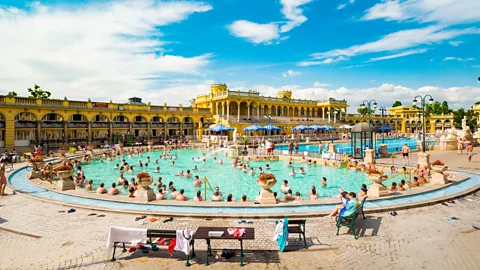 holgs/Getty images
holgs/Getty images4. Best for medicinal healing: Lukács Thermal Bath
As famous as Hungarian thermal spas are for relaxation, they’re perhaps more revered for their clinical treatments. “It’s subsidised healthcare [here],” said de Heinrich. “Doctors prescribe trips to these thermal baths. The idea is, if you have rosacea, psoriasis, rheumatism… the more time you spend in these healing waters, the less time you’ll spend in the critical care units in hospitals.” Budapest’s most famous medicinal thermal spa complex is the Lukács indoor and outdoor thermal bath, a few minutes’ walk from Margaret Bridge in Buda, near Margaret Island.
“It’s beautiful,” said de Heinrich of the 19th-Century complex. “In the 1970s it became a water hospital to treat ailments. You can actually pay a little bit to drink the water. Last time I was there, there was the most stunning woman who must have been in her 70s and she was saying she drinks the water every day and I thought, gosh, I wish I could come back with someone and take her picture, because she was just absolutely the embodiment of health.”
Many thermal baths in Budapest have drinking fountains and halls; the Lukács’s was built in 1937. The suggested dose is 300-500ml per day and is said to help cure stomach issues like gastritis as well as kidney and respiratory disturbances. Medical treatment courses last 15 days and are only accessible with a doctor’s prescription.
“There are these gratitude plaques [on display there],” said de Heinrich, “People… just being grateful for the experience with these thermal baths.”
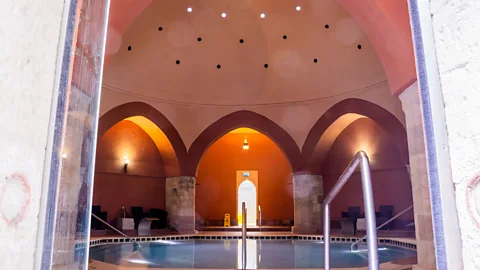 Anna Kormos
Anna Kormos5. Best undiscivered gem: Irgalmasok Veli Bej Bath (Császár Baths)
The SpeciaList
Margaret de Heinrich came to Budapest at the age of 27 as an American diplomat and fell in love with both the city and Hungarian spa culture. Along with her husband, Stephen de Heinrich de Omorovicza, she runs the Hollywood cult-favourite skincare line Omorovicza, which harnesses the curative powers of Hungarian thermal waters.
Going to the baths is one of the most popular activities in Budapest – for locals and tourists alike. If you’d rather not find yourself nose-to-armpit with slippery strangers, try visiting the Veli Bej baths – de Heinrich’s pick for a bathhouse that’s beautiful, yet off the beaten path. “What I like about [it] is it’s not crowded, it’s still a little bit of a discovery,” she said. “And [it’s] one of the oldest Turkish baths, [dating to] 1574.”
The Ottoman empire-era Veli Bej – also known as the Császár Baths – is adjacent to the Császár Hotel, located in north Buda in District II. Visitors will delight in the Ottoman-style domes and tilework as they enjoy the thermal pools, jacuzzi, Finnish and infrared saunas and spa services.
“I feel completely invigorated [when I come out of a thermal bath], said de Heinrich. “Kind of like how I feel after I’ve run 10km. Thriving, vital and you can see the blood flow to your face. When you just come out of that hot water. It’s spectacular. It’s just healthy. You feel and look healthy. “
BBC Travel’s The SpeciaList is a series of guides to popular and emerging destinations around the world, as seen through the eyes of local experts and tastemakers.
[ad_2]
Source link





